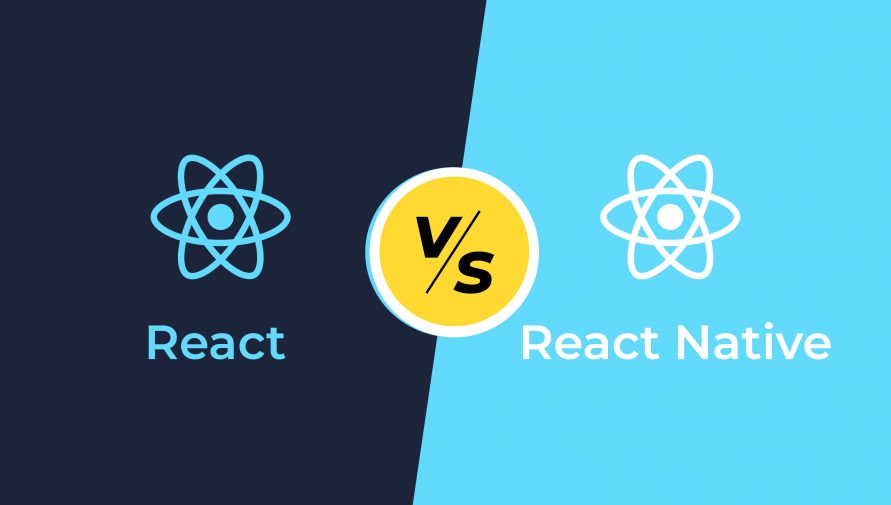React and React Native stand out as two prominent frameworks developed by Facebook. Both are widely used for building user interfaces, but they serve different purposes. Understanding the differences between React and React Native is crucial for developers when choosing the right framework for their projects. In this comprehensive guide, we’ll delve into the intricacies of React and React Native, exploring their features, use cases, advantages, and limitations to help you make an informed decision.
Introduction to React and React Native
React, also known as React.js or ReactJS, is a JavaScript library for building dynamic user interfaces, primarily for web applications. It was developed by Facebook and released to the public in 2013. React utilizes a component-based architecture, allowing developers to create reusable UI components that can be composed to build complex user interfaces efficiently. One of the key features of React is its virtual DOM, which enables efficient rendering of UI components by minimizing unnecessary DOM manipulations.
On the other hand, React Native is a framework for building native mobile applications using JavaScript and React. It was introduced by Facebook in 2015 as an extension of React, allowing developers to leverage their existing knowledge of React to build mobile apps for iOS and Android platforms. React Native enables the development of cross-platform mobile applications that look and feel like native apps, offering performance and user experience comparable to those developed using native technologies.
Differences Between React and React Native
While React and React Native share the same underlying principles and syntax, they are designed for different platforms and have distinct features and capabilities:
- Platform: React is primarily used for building web applications, whereas React Native is designed for building mobile applications for iOS and Android platforms.
- Rendering: React renders components to the DOM (Document Object Model) for web applications, whereas React Native renders components to native UI elements for mobile applications.
- Components: Both React and React Native use components as the building blocks of UI. However, React Native provides a set of components specifically designed for mobile development, such as
<View>,<Text>,<Image>, etc., which map to native UI elements. - Styling: While React uses CSS for styling web applications, React Native uses a combination of JavaScript and a stylesheet-like syntax called StyleSheet for styling mobile applications. React Native also supports Flexbox layout for designing responsive UIs.
- Navigation: React applications typically use browser-based routing for navigation, whereas React Native utilizes a navigation library like React Navigation to manage navigation between screens in mobile apps.
- API Access: React Native provides access to device APIs and native modules through a JavaScript bridge, allowing developers to integrate native functionality seamlessly into their mobile apps. React, being primarily focused on web development, does not have direct access to device APIs.
Use Cases and Advantages
Now let’s explore the use cases and advantages of React and React Native:
React:
- Ideal for building dynamic and interactive user interfaces for web applications.
- Suitable for single-page applications (SPAs) and complex web interfaces.
- Offers a rich ecosystem of libraries and tools, including state management libraries like Redux and MobX.
- Enables server-side rendering (SSR) for improved performance and SEO.
- Provides excellent developer experience with features like hot reloading and a vibrant community.
React Native:
- Perfect for developing cross-platform mobile applications with native-like performance and user experience.
- Enables rapid development with hot reloading and live reloading features.
- Allows sharing codebase between iOS and Android platforms, reducing development time and costs.
- Provides access to device APIs and native modules for integrating native functionality.
- Supports over-the-air (OTA) updates for seamless app updates without requiring app store approval.
Limitations and Considerations
While React and React Native offer numerous benefits, they also have some limitations and considerations:
React:
- Requires a good understanding of JavaScript and React concepts for effective development.
- Performance may degrade in large-scale applications due to the virtual DOM overhead.
- Compatibility issues may arise with third-party libraries and UI frameworks.
React Native:
- Some platform-specific features may require writing native code using platform-specific languages like Swift (for iOS) and Java/Kotlin (for Android).
- Performance may vary between platforms and devices, requiring optimization for resource-intensive operations.
- Limited support for certain native features and APIs may necessitate custom native module development.
Conclusion
Both React and React Native are powerful frameworks for building modern web and mobile applications, each catering to specific platforms and use cases. Choosing the right framework depends on factors such as the target platform, project requirements, development expertise, and performance considerations. While React is ideal for web development and building complex user interfaces, React Native excels in developing cross-platform mobile applications with native-like performance and functionality.
Ultimately, the decision between React and React Native should be based on a thorough evaluation of your project’s needs and goals. By understanding the differences, advantages, and limitations of both frameworks, you can make an informed choice that aligns with your development objectives and delivers the best possible user experience for your application.


